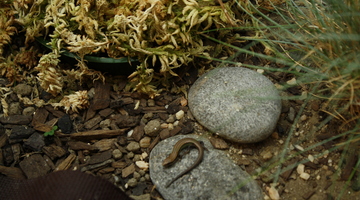Associate Professor Alison Cree, from the University of Otago, talks about the difference between being cold blooded and warm blooded. She discusses why scientists prefer to use the terms ectothermic and endothermic.
Point of interest: Why do you think Alison describes being endothermic as ‘expensive’?
Transcript
DR ALISON CREE
The term ‘cold blooded’ is a bit of a misnomer. We use it because it’s convenient and because it differentiates these animals called reptiles from ourselves and our closest relatives, which we call ‘warm blooded’. But to a scientist, those are not particularly accurate terms.
The reason is that lizards’ body temperature and their blood temperature is quite variable, and it really depends on how much warmth there is in the surrounding environment. So on a cold day, if a lizard was out living in the wilds, it would be at a body temperature of about 4 degrees, and that means that its blood would be at that temperature too, so its blood would be pretty cold. But tomorrow, if the sun comes out and it’s warm enough to bask and the lizard comes and sits in the sun, it will warm up very quickly, and it could reach a body temperature of 30 degrees. So its blood temperature is very variable, and in contrast, our temperature is much more stable and uniformly warm.
The terms that scientists actually prefer are to talk of reptiles being ectotherms – that means animals that get their warmth from outside the body – whereas we humans are endotherms, we get out heat internally. We’ve got these little central heating systems, little boilers running inside ourselves. We have cells that are warm all the time. That is great for having active brains, being able to think clearly and to have muscles that move readily all the time, but it’s really expensive, and what it’s expensive in is fuel, and that means lots of food.
So the beauty of the way ectotherms such as reptiles work is that they need much less food to operate, while the downside is that the reptiles are much more at the whim of the environment in terms of activity at any given time. But it also means they are very able to tolerate big swings in food supply, so they can go without food – if it’s cold, they can go without food for 4 or 5 months for instance. So it’s a different way of living, but it’s not necessarily an inferior way of living.
Acknowledgement:
John Gardiner, Department of Conservation. Crown copyright 2009.



